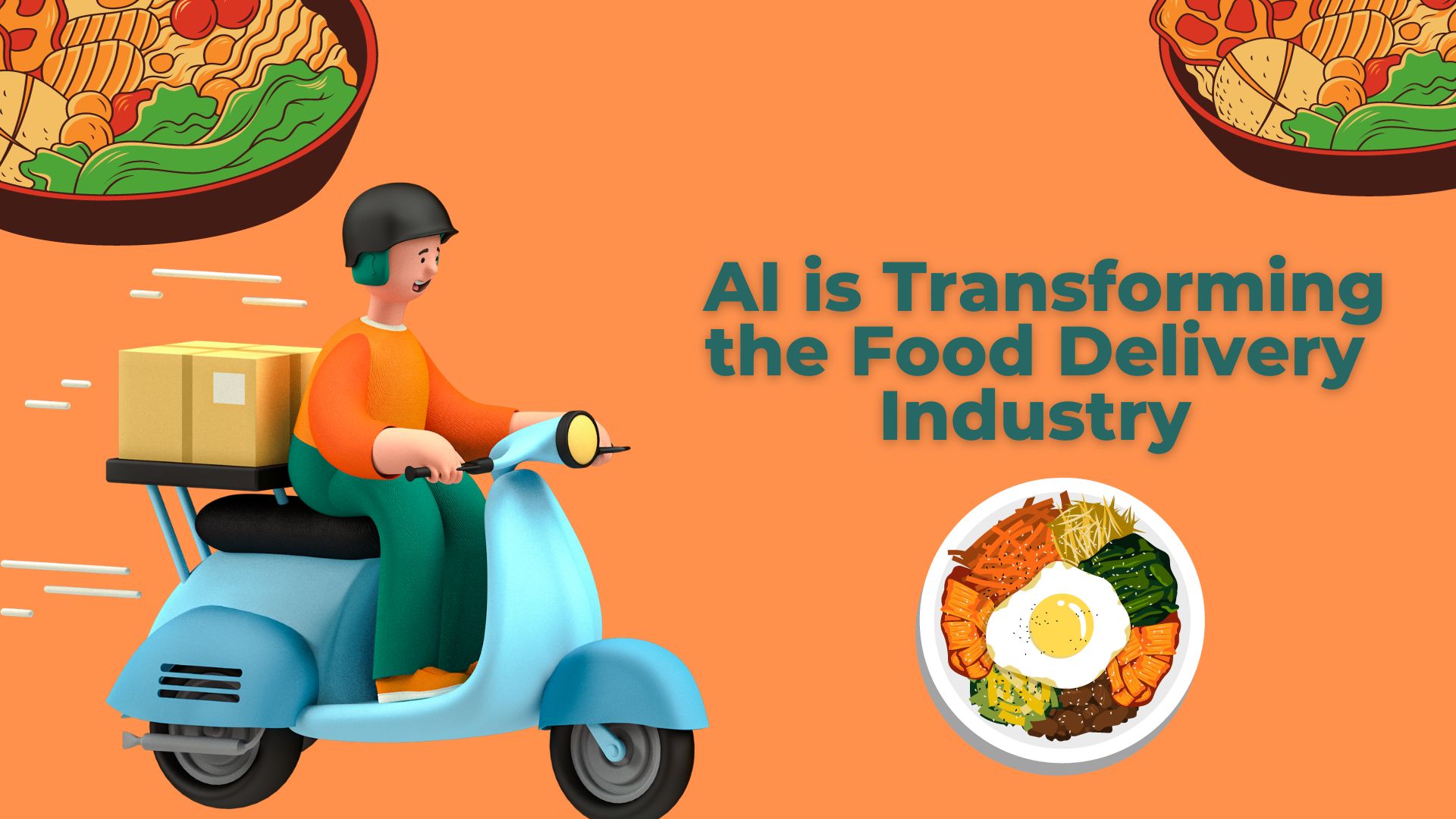The Food Delivery Industry has entered the Artificial Intelligence (AI) segment of the digital marathon, a journey that began with the emergence of the internet and has taken organizations through several phases of digitalization. The rise of AI is entirely changing the industry’s physical world opening the door to more innovations and new operating models.
Online food delivery is a rising and prominent trend in the world now. AI in the food industry has gained huge momentum in recent years. The food delivery industry has undergone a remarkable transformation, largely driven by advancements in AI technology. When we talk about the latest digital advancements, there is hardly any industry left that has not adopted artificial intelligence to transform its operations. AI has not only streamlined the entire process of food delivery but has also significantly enhanced customer experiences and operational efficiency for cake delivery and other businesses.
So here in this guide, we shall explore the multifaceted role of AI in shaping the future of the food delivery landscape.
AI Integration in Food Delivery Solutions
Because of the significant influence of AI, the online food delivery industry is undergoing a profound transformation, restructuring every stage from order placement to final delivery. Here is how:
Enhanced Personalisation and Customer Experience
One of the key contributions of AI in the food industry is its ability to provide personalized experiences for customers. AI algorithms analyze user data, including past orders, preferences, and location, to offer tailored recommendations. This level of personalization not only enhances consumer satisfaction but also encourages repeat business. Machine learning algorithms continuously refine their recommendations, ensuring that users receive suggestions based on evolving preferences.
Efficient Route Optimisation for Delivery
AI plays a crucial role in optimizing delivery routes, thereby reducing time and costs. Delivery platforms leverage machine learning algorithms to analyze real-time data such as traffic patterns, weather conditions, and order volumes. By considering these variables, AI systems can dynamically adjust delivery routes to ensure timely and efficient deliveries. This not only benefits customers by reducing waiting times but also enhances the overall operational efficiency of food delivery services.
Demand forecasting and inventory management
AI-driven analytics enable food delivery platforms to predict demand patterns accurately. By analyzing historical data, current trends, and external factors, AI algorithms can forecast peak hours and popular menu items. This insight allows businesses to optimize their inventory management, ensuring that they have an adequate stock of ingredients during high-demand periods. As a result, restaurants can minimize food waste and ensure a seamless ordering experience for customers.
Responsive Chatbots and Customer Service
AI-powered chatbots have become instrumental in enhancing customer service for food delivery platforms. These virtual assistants handle routine customer queries, order tracking, and issue resolution efficiently. Chatbots are available 24/7, providing instant responses to customer inquiries and improving overall communication. This not only frees up human customer support agents for more complex issues but also contributes to a faster and smoother customer experience.
Live Order Tracking
Customers can track their orders in real-time using GPS and map integration, thanks to AI. This element promotes transparency and improves the overall customer experience. It can also detect and prevent fraudulent activities by dissecting transaction data and recognizing patterns.
Fraud prevention and security measures
AI technologies are employed to enhance the security of online transactions and prevent fraudulent activities in the food delivery sector. Machine learning algorithms analyze transaction patterns and user behavior to identify and flag potentially fraudulent activities. This proactive approach helps safeguard both customers and businesses from unauthorized transactions and ensures the integrity of the food delivery ecosystem.
Kitchen automation and robotics
In the quest for efficiency, some food delivery platforms are incorporating AI-driven kitchen automation and robotics. AI-powered systems can optimize kitchen workflows, automate repetitive tasks, and enhance the overall speed and accuracy of food preparation. This not only improves the efficiency of restaurants but also contributes to faster order processing and delivery times.
Feedback Analysis for Quality Improvement
AI is utilized to analyze customer feedback and reviews, providing valuable insights for continuous improvement. Sentiment analysis algorithms can categorize feedback based on positive and negative sentiments, helping restaurants and delivery services identify areas for enhancement. This data-driven approach allows businesses to make informed decisions, refine their offerings, and address customer concerns promptly.
Restaurant Planning and Listings
The incorporation of AI into the system has also aided restaurants in making timely decisions and efficient planning. Restaurants can now understand the true market trend and plan accordingly. This also assists food delivery companies in selecting the best restaurants to include on their lists. All of these decisions are based on data generated by users and AI algorithms.
Sustainable practices and Delivery routes
AI is increasingly being used to promote sustainability in the online food industry. Machine-learning algorithms can optimize delivery routes to minimize carbon emissions and fuel consumption. By considering factors such as vehicle types, traffic conditions, and delivery schedules, AI contributes to more environmentally friendly delivery practices, aligning with the growing demand for eco-conscious business operations.
The integration of AI in the food delivery industry has ushered in a new era of efficiency, personalization, and sustainability. As technology continues to advance, we can expect further innovations that will reshape the way we experience and interact with food delivery services.
